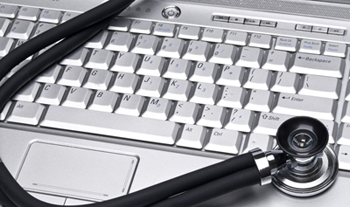Correct medical diagnosis is the cornerstone of medical care. Imagine you consulting a doctor for a crippling headache. It could be a sinus headache but your physician wrongly diagnoses it as caused by migraine. You are administered treatment for the sinus, which means you are not getting the right medicines and in the long run, this could make your condition worse and have dire consequences on your health.
When you see a doctor and describe all your symptoms, you would imagine that the physician will correctly analyze the issue. However, despite the rigorous training that they go through, doctors do err with diagnosis. In fact, a recent study showed that failure to diagnose and provide timely treatment was the most common reason for a patient safety incident, with a rate of 155 per 1,000 hospitalized patients!
The point to note is that making the right diagnosis is not easy. According to an article in ConsumerReport.org, physicians make wrong diagnosis in 10–15 % of office visits for a new problem because of many reasons. Often, doctors need to come up with a correct diagnosis within a limited period of time (as an average patient office visits lasts only for 20 minutes). Moreover, patients may not disclose complete or accurate information about their medical history and this can restrict doctors from making a correct analysis about their health condition. Even the most astute physicians can go wrong if they are interrupted during the consult by office staff members.
Entering wrong patient complaint by office staff in the electronic health record can mislead the doctor. An online review published in BMJ Quality and Safety on Aug. 7, 2013, suggests that laboratory tests are incorrect in 2 percent to 4 percent of medical cases can also lead to diagnostic errors. The prescription of the wrong drug or dosage by a physician can also prove to be deadly.
Medical transcription errors such as misspelling or misinterpretation of terms in the physician’s dictation can eventually affect treatment at a later stage. Errors in diagnosis can prove fatal in patients suffering from invasive diseases. A study conducted by the Houston Veterans Affairs Facility found that a large number of misdiagnoses involve conditions like cancer, pneumonia, acute renal failure, urinary tract infections and congestive heart failure. Misdiagnoses can often increase the medical cost if unnecessary laboratory tests are recommended by the doctor.
The following tips can help reduce the incidence of diagnostic errors:
- Arriving at a final analysis or judgment with the initial information provided by the patient should be avoided
- Do not connect symptoms to similar complaints experienced by patients
- Do not allow stereotypes to interfere with clinical judgment
- Don’t be in a rush to come to a conclusion
- Pay attention to peer opinion
Lack of communication between doctor and patient contributes to more than 80% of the medical misdiagnosis. These generally include – improper review of patient medical history, errors in diagnostic tests and misinterpretation of test results. As a patient, you need to understand the different steps to be followed starting from the first day of the visit. Try to schedule your appointment early in day so that your consultation time will not be shortened. Discuss all your current health issues and symptoms and previous medical history in detail with the physician. Patients can enquire how the doctor plans to conduct a diagnosis. Patients who are not satisfied with the diagnosis or treatment plan can seek a second opinion from another trained physician.


